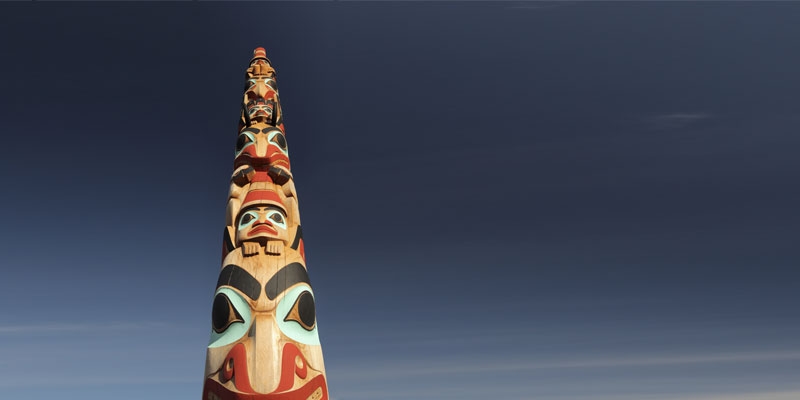Government Spending and Own-Source Revenue for Canada's Aboriginals: A Comparative Analysis

With average unemployment rates on reserve above 20% and graduation rates below 40%, there is a clear gap in outcomes between Aboriginals and non-Aboriginals in Canada. This is sometimes blamed on funding disparities. This study provides a fact-based evaluation of the oft-heard claims that spending on Canada’s aboriginal population is not comparable to spending on other Canadians. It examines actual spending on aboriginal Canadians using data from the federal department of Indigenous and Northern Affairs Canada, Health Canada, and provincial gov-ernments, sources where aboriginal spending was clearly identified in the public accounts.
Indigenous and Northern Affairs Canada (INAC)
The data used to compare INAC spending on aboriginal matters with total federal program spending runs from 1946/47 through 2013/14. Per-person comparisons date from 1949/50. The increase in spending on Canada’s abo-riginal peoples has been significant. In real terms, total department spending on Canada’s aboriginal peoples rose from $82 million annually in 1946/47 to over $7.9 billion in 2013/14 (all figures in this report are inflation-adjusted to 2015 dollars). It grew from $939 per registered First Nation individual in 1949/50 to $8,578 in 2013/14—an in-crease of 814%. In comparison, total federal program spending per capita, on all Canadians, rose by 376%, from $1,532 in 1949/50 to $7,295 in 2013/14.
Health Canada
The data from Health Canada dates from 1994/95 (the earliest year available) through 2013/14. In inflation-adjusted terms, Health Canada spending on First Nations/Inuit health care jumped from just under $1.4 billion in 1994/95 to $2.6 billion as of 2013/14. On a per-capita basis, the amount spent per First Nations/Inuit person by Health Canada rose from $2,358 in 1994/95 to $2,823 in 2013/14. Included in the $2.6 billion figure for 2013/14 is the $1 billion cost of supplementary health-care benefits for 808,686 First Nation and Inuit people, the Non-Insured Health Benefits Program. This Health Canada program delivers health-care benefits to First Nations and Inuit peoples that other Canadians normally receive from an employee benefit package or must purchase extra insurance for, or purchase out-of-pocket: vision care ($31.5 million); dental care ($207.2 million); medical transportation ($352.0 million); pharmaceuticals ($416.2 million), covering claims for pharmacy benefits not covered by private, public, or provincial/territorial; health care plans; other health care, including medical supplies and equipment, short-term crisis intervention, and mental health counselling ($14.2 million).
Provincial governments since the mid-1990s
Adjusted for inflation, total annual provincial spending on Aboriginals rose from just $43 million in 1993/94 to $946 million by 2013/14. The provinces spent $77 per registered First Nations person in 1993/94 compared with $1,028 in 2013/14, an increase of 1,235%. In comparison, provincial spending per capita, on all Canadians in the provinces, rose from $7,672 in 1993/94 to $10,059 in 2013/14, an increase of 31%.
Own-source revenue
The final set of statistics is derived from the 2013/14 publicly available audited financial statements for First Nation communities in Canada. In total, First Nations communities in Canada generated over $3.3 billion dollars in claimed own-source revenue. Only 11% ($386.6 million) was identified as natural resource revenue, the rest being classified as from other sources.
Alberta First Nations generated the highest levels of own-source revenue, cumulating to over $711 million, of which $122 million was classified as natural resource revenue.
In 2013/14, over 100 First Nations communities in Canada were generating more own-source revenue for their communities than they received in government transfers. For example, Tsuu T’ina Nation in Alberta was the top earner of own-source revenue in 2013/14. In a single fiscal year, the community generated over $113 million in own-source revenue—over five times the amount Tsuu T’ina Nation received in government transfers for 2013/14. In 2013/14, Frog Lake First Nation in Alberta generated the most natural resource based own-source revenue in the country—over $45.6 million in one fiscal year. On a per-capita basis, Yale First Nation in British Columbia generated the largest natural resource revenue in the country. Their small community of just over 100 people generated $45,557 per capita in natural resource revenue for 2013/14.
Summary
From the data available, over $263 billion has been transferred to Aboriginals: INAC spending from 1946/47 to 2013/14 of $214.7 billion; Health Canada spending from 1994/95 to 2013/14 of $40.6 billion; Provincial government spending over the two decades up to 2013/14 of $8.3 billion.
This analysis reveals that spending on Canada’s aboriginal population has risen substantially in real terms—in total, per capita, and compared with overall government program spending. Meanwhile, in one year alone, First Nations communities in Canada were able to generate over $3.3 billion in own-source revenue, and many First Nations communities in Canada are generating own-source revenue that surpasses their government transfers.
Authors:
More from this study
Subscribe to the Fraser Institute
Get the latest news from the Fraser Institute on the latest research studies, news and events.


